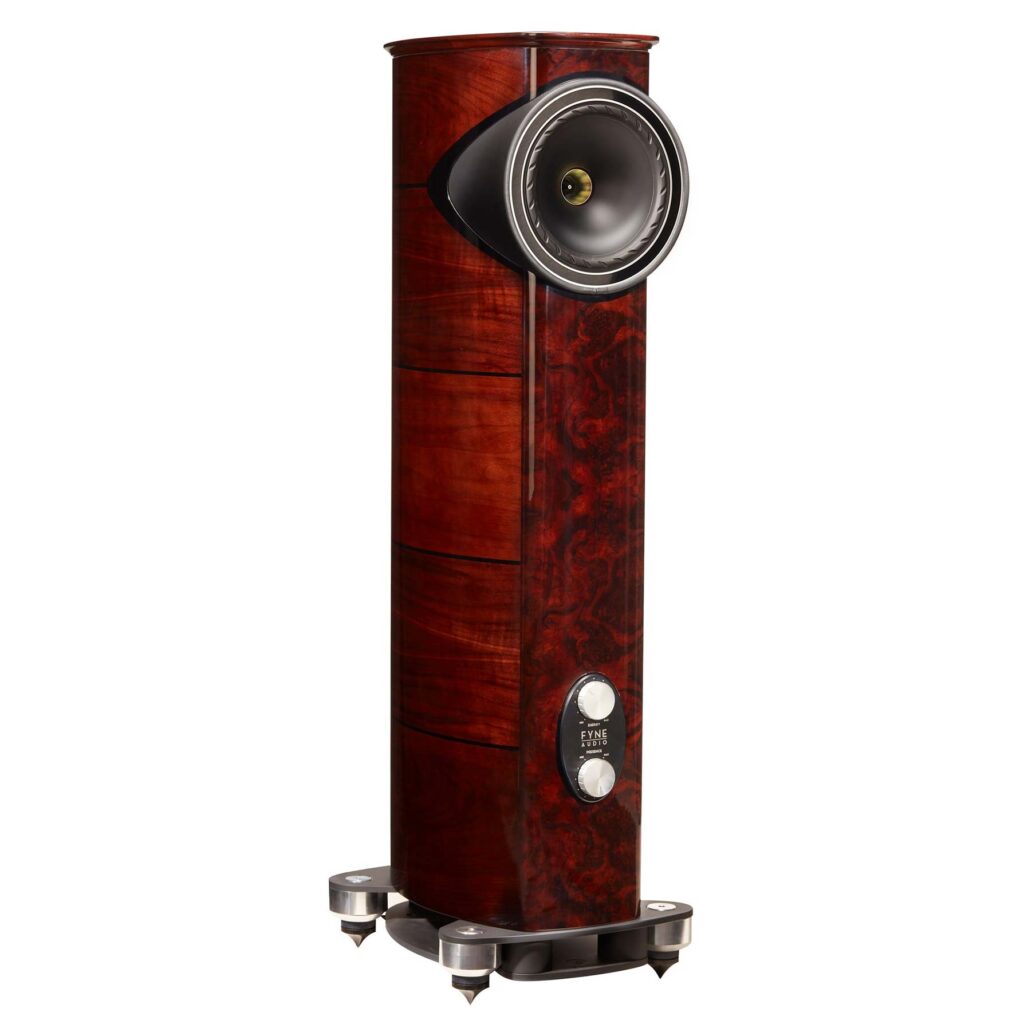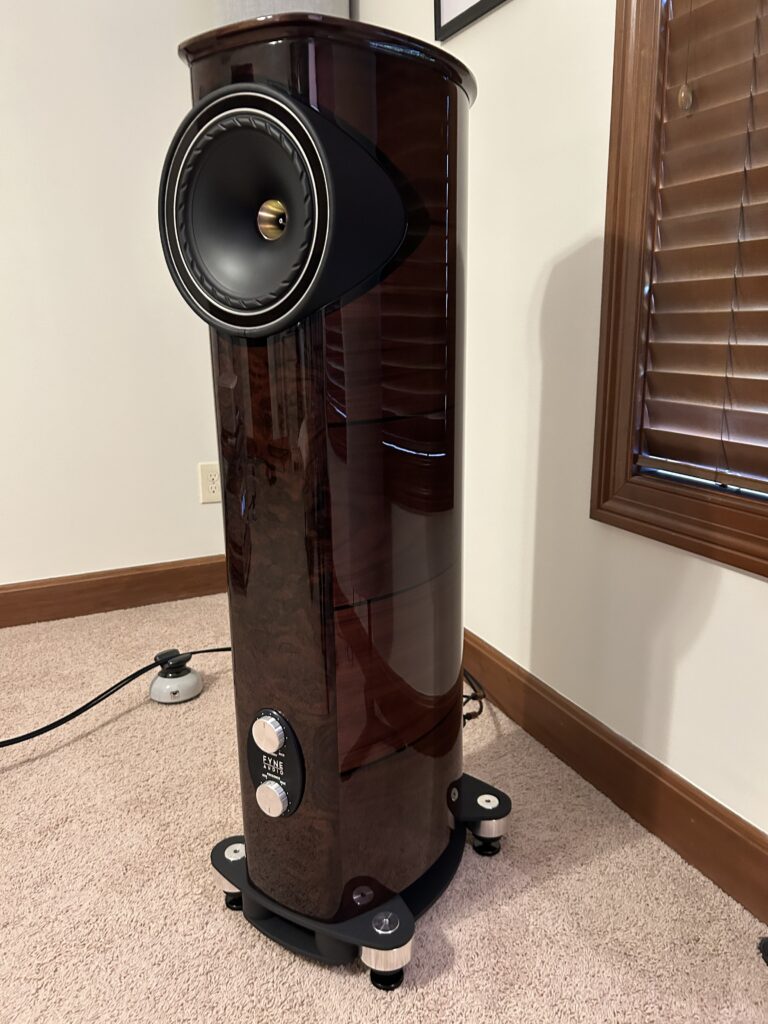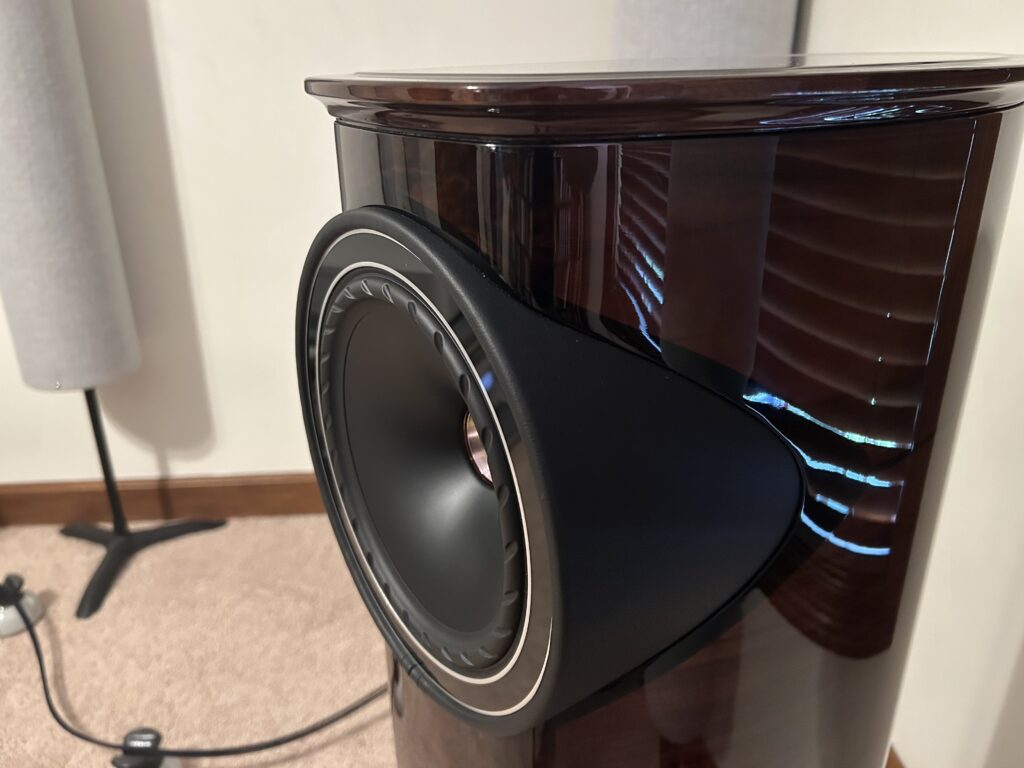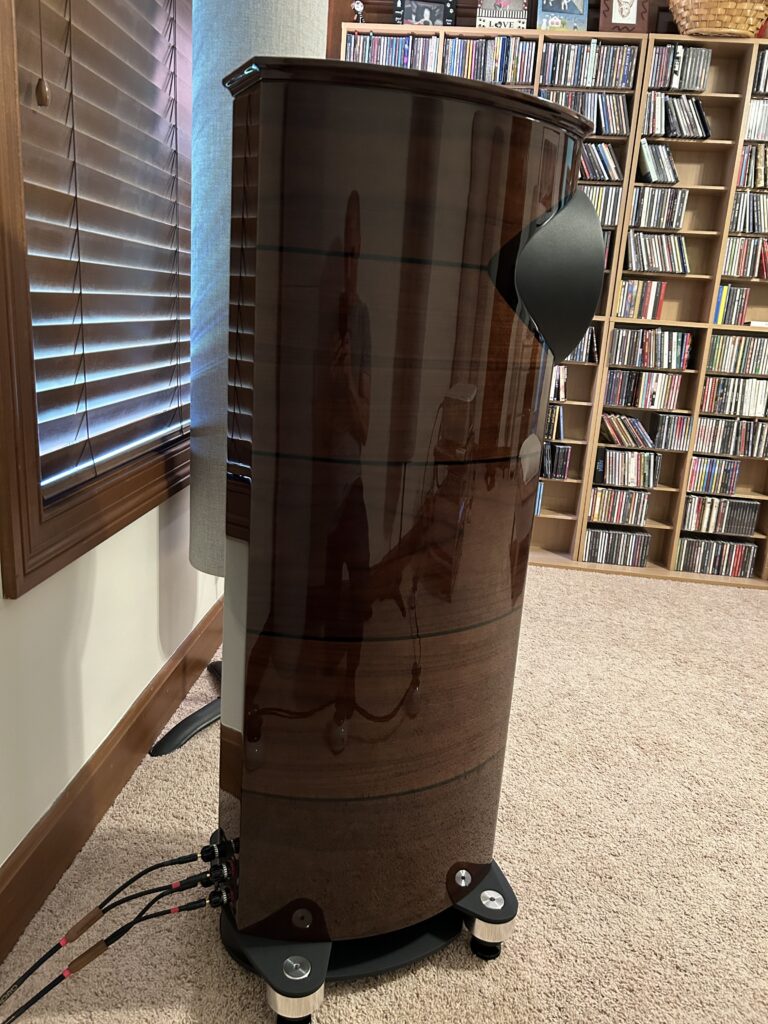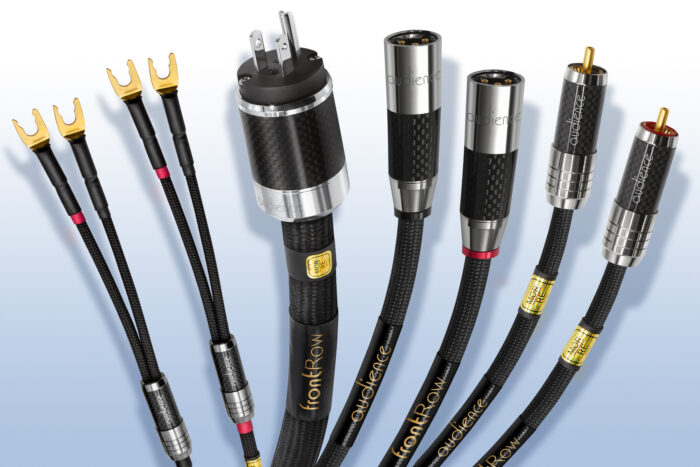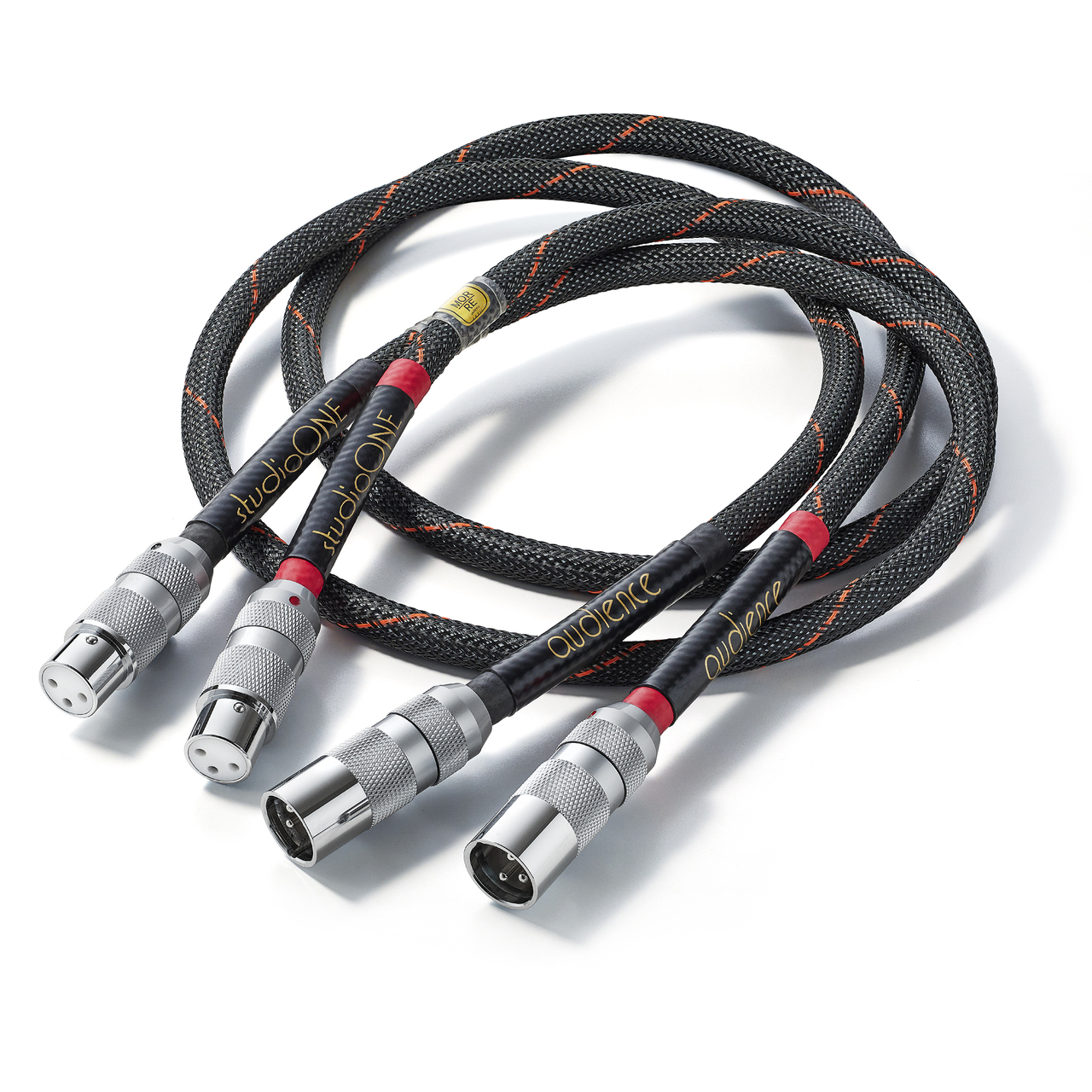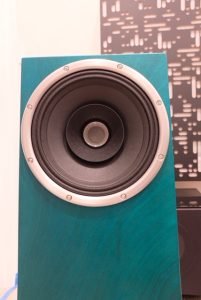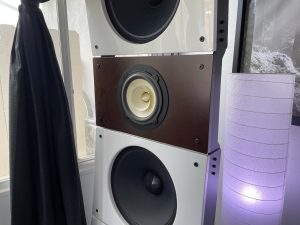Over the course of my audiophile journey, I've owned, reviewed, or auditioned many different types of loudspeakers, from electrostatic to planar, from dynamic to horn-loaded, in a myriad of configurations. The one transducer variant that I've not had the opportunity to experience in any meaningful sense is a point-source design. Curious to see what I was missing out on, I visited the Upscale Audio room at the 2024 AXPONA show and sat down in front of a pair of Fyne Audio F703SP loudspeakers. I was intrigued.
Fyne Audio is headquartered just outside of Glasgow in Scotland, and is named after nearby Loch Fyne. Fyne Audio was founded in 2017 by former employees of Tannoy who wanted to break the mold and develop advanced loudspeakers free of technological, budgetary and corporate constraints. At the core of Fyne Audio is Dr. Paul Mills, who brings with him decades of loudspeaker engineering and design experience. Dr. Mills took his tried-and-true design methodologies, and leveraging the unfettered latitude afforded him by Fyne, refined and evolved the art of loudspeaker craft to previously-unrealized heights.
In 2017, Fyne Audio unveiled its flagship F1 series, which encompassed all of Dr. Mills' loudspeaker-engineering acumen and prowess. From there, Dr. Mills and team introduced more affordable products that took advantage of trickle-down technology gleaned from the F1 series. As of 2024, Fyne Audio has no fewer than 10 product lines, if one counts subwoofers, center-channel pieces, and the recently-introduced "Special Production" models, denoted as such by their ‘SP' monikers.
Partnering with Joel Bennett of retailer Upscale Audio and Alex Brinkman of Harmonia Distribution, I acquired the F1-8S loudspeaker, which represents the smallest floorstander in the F1 series. Introduced in October of 2023, the F1-8S fills a product gap between the standmount F1-8 model and the much-larger F1-10S floorstander.
So what differentiates Fyne Audio loudspeakers from the multitudinous offerings from competing manufacturers? Lots of things, it turns out. First and foremost is the point-source or coaxial placement of the drive units. Traditional, multi-way dynamic loudspeakers stagger two or more drive-units vertically on a baffle to cover the intended frequency range. This arrangement can lead to lobing and phase issues associated with the output from each driver arriving at the listener's ears at different times. Fyne's solution to this problem is to position the tweeter at the center of, and within, the woofer. Dubbed IsoFlare by Fyne, this arrangement time-aligns the outputs from both drivers and ensures that there are no phase anomalies. This point-source construct reproduces sound isotropically, with a constant directivity factor, to optimize on-axis and off-axis imaging.
The F1-8S utilizes a 1" magnesium-dome compression driver for the tweeter. For the woofer, Fyne manufacturers its own 8" driver, and the cone material consists of a blend of natural fibers, the composition of which is proprietary. In addition to the cone material, the woofer differentiates itself with a unique surround termination. Referred to as FyneFlute by Fyne, this corrugated surround is designed to reduce resonances where the cone meets the surround and prevent spurious energy from finding its way back into the cone.
The F1-8S' crossover point is 1.8kHz, and Fyne employs a first-order (6dB) slope for the tweeter and a second-order (12dB) slope for the woofer. Fyne utilizes premium components in the crossover, including capacitors from UK-based ClarityCap and silver-plated copper wiring from Van Den Hul, and mounts the crossover assembly onto a vibration-dampening particle board. As a final measure, Fyne cryogenically treats the crossover components in its own optimized cryogenic chamber, to reduce materials stress and ensure a freer flow of energy to the drivers. Fyne utilizes top-grade WBT NextGen binding-post connectors that facilitate bi-amping/bi-wiring.
Fyne Audio's engineering prowess extends beyond the transducers and electrical components. With the F1-8S, Fyne has implemented a cabinet of both Herculean build quality and sumptuous aesthetics. Composed of birch-ply and various hardwoods, the F1-8S' enclosure features gently-curved non-parallel sides and a rounded front baffle. The F1-8S is veneered in a rich walnut finish, with Burl-walnut accents on the front and top panels. Fyne applies multiple coats of piano lacquer to the entire enclosure. Internally, the F1-8S employs a dual-cavity construction and is vented via a down-firing port. Fyne has devised a fresh approach to the typical bass-reflex tuning prevalent in competing loudspeaker designs. Referred to as BassTrax by Fyne, the F1-8S' port radiates bass energy in a 360-degree pattern via an aluminum conical tractrix diffuser. This patent-pending approach is purported by Fyne to disperse bass energy more evenly out from the enclosure, making the F1-8S easier to place in the room. The entire cabinet rests on a substantial metal plinth, with massive metal outrigger feet and accompanying spike couplers.
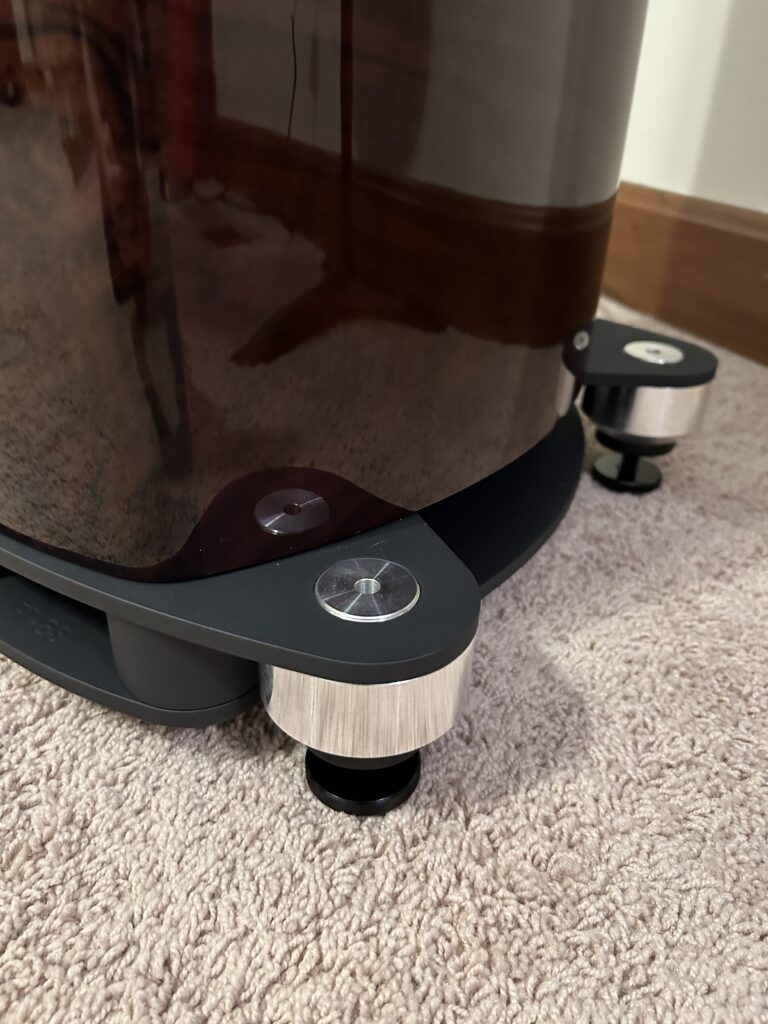
Further distinguishing itself from other loudspeakers, the F1-8S offers two unique features. First, the Fyne provides an earth-ground terminal that can be used to ground the loudspeaker, for reducing the effects of radio-frequency interference (RFI). Secondly, the F1-8S includes two dials on the front panel for adjusting the loudspeaker's frequency-response characteristics. The top dial, named "Energy," allows the user to increase / decrease the treble output emitted by the F1-8S, up to +/- 3dB, from 1.8kHz - 34kHz. The lower dial, named "Presence," allows the user to increase/decrease output in the upper-midrange, from 2.5kHz - 5kHz, by up to 3dB. This presence adjustment allows the listener to manipulate vocal articulation and clarity, and to vary soundstage depth.
Specifications for the Fyne Audio F1-8S include a frequency response of 30Hz - 34kHz, within 6dB tolerances, a nominal impedance of 8 ohms (with a minimum of 6 ohms), and a 91db sensitivity rating (measured at one meter, with a 2.83 volt input). Continuous power handling is 100 watts, with peak power handling specified as 400 watts. Fyne recommends amplifiers rated between 20 watts and 200 watts be used. The F1-8S stands 42.8" tall without its spikes installed, and measures 13.2" wide by 17.5" deep, including its plinth. Fyne Audio provides a seven-year warranty for the F1-8S.
During the course of the review period, my system comprised the Esoteric K-01XD SACD player, Luxman L-509X and Dan D'Agostino Progression integrated amplifiers, Audience FrontRow powerChords, Audience frontRow and Nordost Tyr 2 interconnects and speaker cables, Audience aR2p-T4 power conditioner and Hidden Treasure power outlet, with room treatments by Acoustic Sciences Corporation. All components were placed on a SolidSteel 6.2 Audio Table, with Symposium Acoustics Rollerblock Jr HDSE footers.
The F1-8S loudspeakers arrived individually boxed and secured to a pallet. Unusually, the F1-8S is meant to be unboxed from the bottom. The reason for this is readily apparent, however; opening the carton from the bottom allows the user to easily install the spike footers to the plinth prior to unpacking. The F1-8S includes, in addition to the aforementioned floor spikes, protective discs for installation on hardwood floors, and speaker-cable jumpers for users who wish to single-wire the loudspeaker. Fyne provides a well-written manual that extols the design virtues of the F1 series of floorstanding loudspeakers and lays out general guidelines for placement. Lastly, Fyne also includes a certificate signed by the technicians responsible for visual and acoustic testing of the fully-assembled loudspeaker. Take note that the F1-8S does not come with a grille cloth, leaving the drivers exposed. This could be problematic for uptight, obsessive-compulsive audiophiles like me who worry about inquisitive fingers, dust, sunlight, locusts, pestilence, etc.
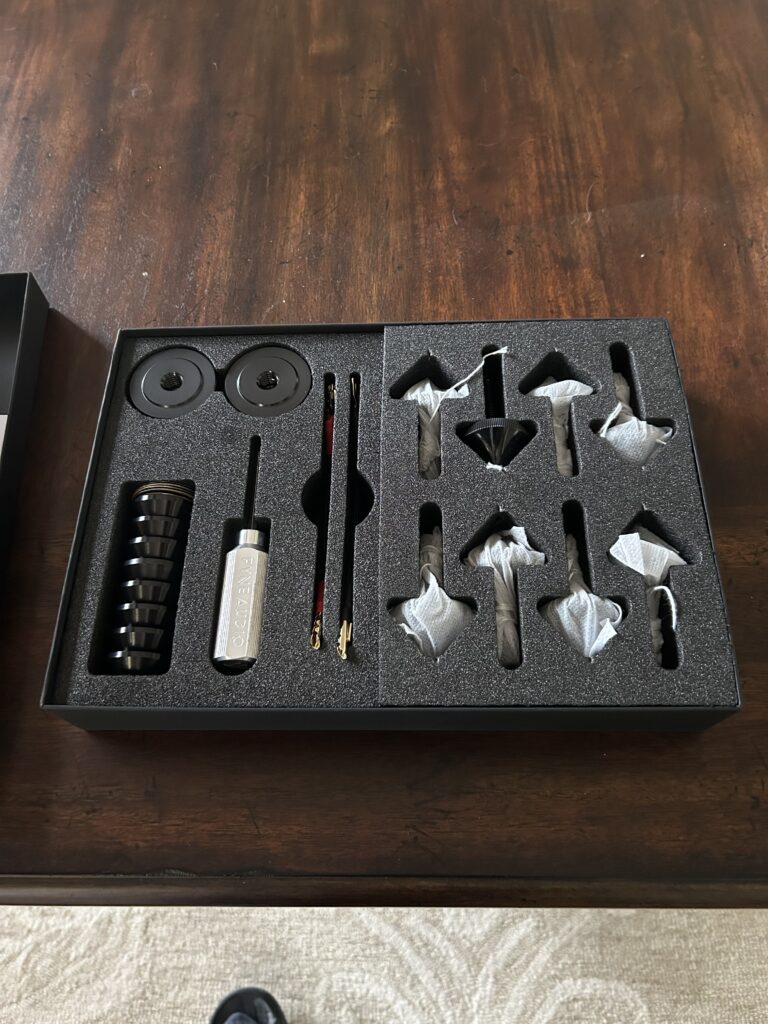
Installation of the F1-8S was more straightforward in my small room than any loudspeaker that has proceeded it. Perhaps owing to its unique BassTrax reflex-loading, the F1-8S was indifferent to boundary reinforcement; no matter where I placed the loudspeaker, it was free from excessive bass bloom or bloat. I finally settled on a quasi-nearfield arrangement, with the F1-8S loudspeakers placed along the long wall and almost halfway into the room, spread far apart, and toed in almost directly to the listening position. Break-in proved to be a protracted experience, requiring more than 300 hours to run its course. Fresh out of its carton, the F1-8S was a little brash and forward-sounding, with a brittle and splashy treble coupled to a thinned-out bass range. Things improved gradually, but it took several weeks of constant playing at low levels before the F1-8S settled down, relaxed, and opened up.
Once broken in, the sonic signature of the Fyne Audio F1-8S proved to be one of resolution, transparency, and openness, accompanied by holographic soundstaging, in-the-room imaging, and consummate full-range performance. Herbie Hancock's Sextant album, (Columbia/Legacy CK 649-83) recorded in 1973 when Hancock was 32 years old, reflects an artist in transition as he incorporated synthesizers and elements of funk into his compositions to an extent never witnessed before. "Rain Dances," with its atonal electronic burbling, punctuated by staccato trumpet bursts and start-stop rhythms, can be a challenging listen. Played over the F1-8S, however, the disparate elements that make up the track came together more cohesively, and I could more readily appreciate Hancock's underlying electric-piano foundation amidst the swirling synthesizer arpeggios. The F1-8S' sublime transparency allowed me to listen deep into the mix and follow the myriad of percussion instrumentation flitting in and out of the presentation. This revelatory insight into the the recording enabled me to finally appreciate this cut, whereas, up to this point, I'd been able to merely tolerate it as a preamble to the more accessible funk-laden tracks that followed.
The F1-8S' midrange was imbued with an expressiveness and truthfulness that surpassed the performance of any loudspeaker I've had in my system, irrespective of price. Voices in particular were utterly beguiling. Whether it was the sultry stylings of Leslie Feist singing "Leisure Suite" from her Let It Die CD (Cherry Tree/Interscope B0004442-02), Donald Fagen's slinky crooning on "Deacon Blues" from Steely Dan's Aja SACD (Analogue Productions CAPP 139 SA), or Robin Pecknold's reverb-soaked vocal on "Oliver James" from Fleet Foxes' eponymous release (Sub Pop SPCD 777), the F1-8S reproduced the human voice with a verisimilitude and tactile dimensionality that was unrivaled in my experience.
Perhaps owing to its IsoFlare concentric-driver arrangement, its narrow and curved front baffle, or some combination thereof, the Fyne Audio loudspeaker excelled at soundstaging. Even looking directly at the F1-8S, the speaker utterly disappeared into the broader soundscape, leaving no vestige of its presence behind. The F1-8S recreated the virtual stage with consummate width, depth and height, and it excelled at layering images positioned on that broader stage. Images were focused, tangible and corporeal to an extent I was unaccustomed to; central images, in particular, were fully fleshed out and present in the room. Jim Morrison's vocals on "Wishful Sinful" from The Doors' fourth release, The Soft Parade (Elektra/Rhino R2 101187), can sometimes be subsumed and diminished by the hard-panned strings present in the left channel, but the F1-8S reproduced Morrison's vocal sublimely, carving out space for Morrison and affording him room to breathe within the tightly-packed presentation.
The Fyne Audio F1-8S was no slouch when it came to reproducing the frequency extremes. Having come off of loudspeakers with tweeters made of exotic materials (e.g., beryllium, diamond), I was curious to see how the F1-8S, with its less-exotic Magnesium tweeter, would fare. It performed, in a word, spectacularly. The Fyne Audio's top end was gloriously extended, with lightning-quick transient response and a complete absence of grain. The F1-8S afforded me a newfound appreciation for John Densmore's fluid drumming and percussion work throughout the 8-minute title track of the The Soft Machine. Similarly, the F1-8S' resolving powers cut through the slight haze and obfuscation that pervades the Talking Heads' Naked CD (Sire 9 25654-2). Playing "Mr. Jones," I was able to more readily discern the repeated flute motif that dances through the mix, and the myriad percussion instruments were played back with greater clarity and a more crystalline purity than I've experienced with other loudspeakers.
The bass performance of the Fyne Audio represented the perfect amalgam of ported and sealed-box designs. The F1-8S possessed the punch and dynamics of a ported design, coupled with the speed and control of a sealed-box alignment. Playing "Tank" from Emerson, Lake and Palmer's eponymous debut release (BMGCAT2CD1), I was astounded by how clear and distinct Carl Palmer's bass-drum rolls sounded; there was a complete dearth of overhang, and every beat was clearly delineated. Likewise, Chris Squire's bass pyrotechnics on "Heart of the Sunrise" from YES' Fragile CD (Atlantic/Rhino GYRBD50009) were supple and bouncy in their rhythmic fluidity, with no accompanying mid-bass bloat. The F1-8S also played low, reaching Stygian depths when called upon to do so. Mike Oldfield's Amarok CD (Virgin 7243 8 49385 2 9) has passages with pronounced low-bass content, and the F1-8S was able to move tremendous amounts of air, pressurizing my listening room even at moderate levels.
Oldfield's Amarok release highlighted another strength of the F1-8S—dynamism. The Fyne Audio loudspeaker rendered the extreme dynamic contrasts present in the recording with startling realism and impact. And on account of the tremendous speed on offer, the F1-8S did a superb job with micro-dynamics, those little differences in amplitude and inflection across notes that bring music to life and elevate it from mere simulacrum. In that regard, listening to a recording like Oregon's Out of the Woods CD (Discovery 71004) was transformative, helping to suspend my disbelief that I was listening to a reproduction and not a live musical performance.
So, for a loudspeaker that does so many things well, are there any downsides to the F1-8S? Well, the Fyne is not a laid-back loudspeaker. Don't get me wrong, the F1-8S is not forward or obstreperous in demeanor, but it made every musical performance an event, one that left me no option but to engage with the musical message. For those seeking a loudspeaker that blends into the background, the Fyne may be interpreted as being a little overly energetic. But, the F1-8S has a trick up its sleeve, namely those crossover Energy and Presence controls. With careful adjustment of one or both controls, the user can dial in the condign amount of soundstage perspective and/or treble vivacity. It's this variability that affords the Fyne a level of flexibility not available with other loudspeakers.
Heroically constructed, with an exceptional fit-and-finish, the Fyne Audio F1-8S is a handcrafted masterpiece. More than that, the F1-8S is a sonic tour-de-force. With superior resolving powers, holographic imaging, and tonality that is spot-on neutral, the F1-8S disappears into the soundstage and brings music to life in a spellbinding manner, one that, once heard, is impossible to forget. The Fyne F1-8S is a music maker of the highest caliber, and in all my years as a reviewer, it's the most accomplished loudspeaker I've experienced.
Fyne Audio F1-8S Loudspeakers
Retail: $18,000 per pair
Fyne Audio
Harmonia Distribution




